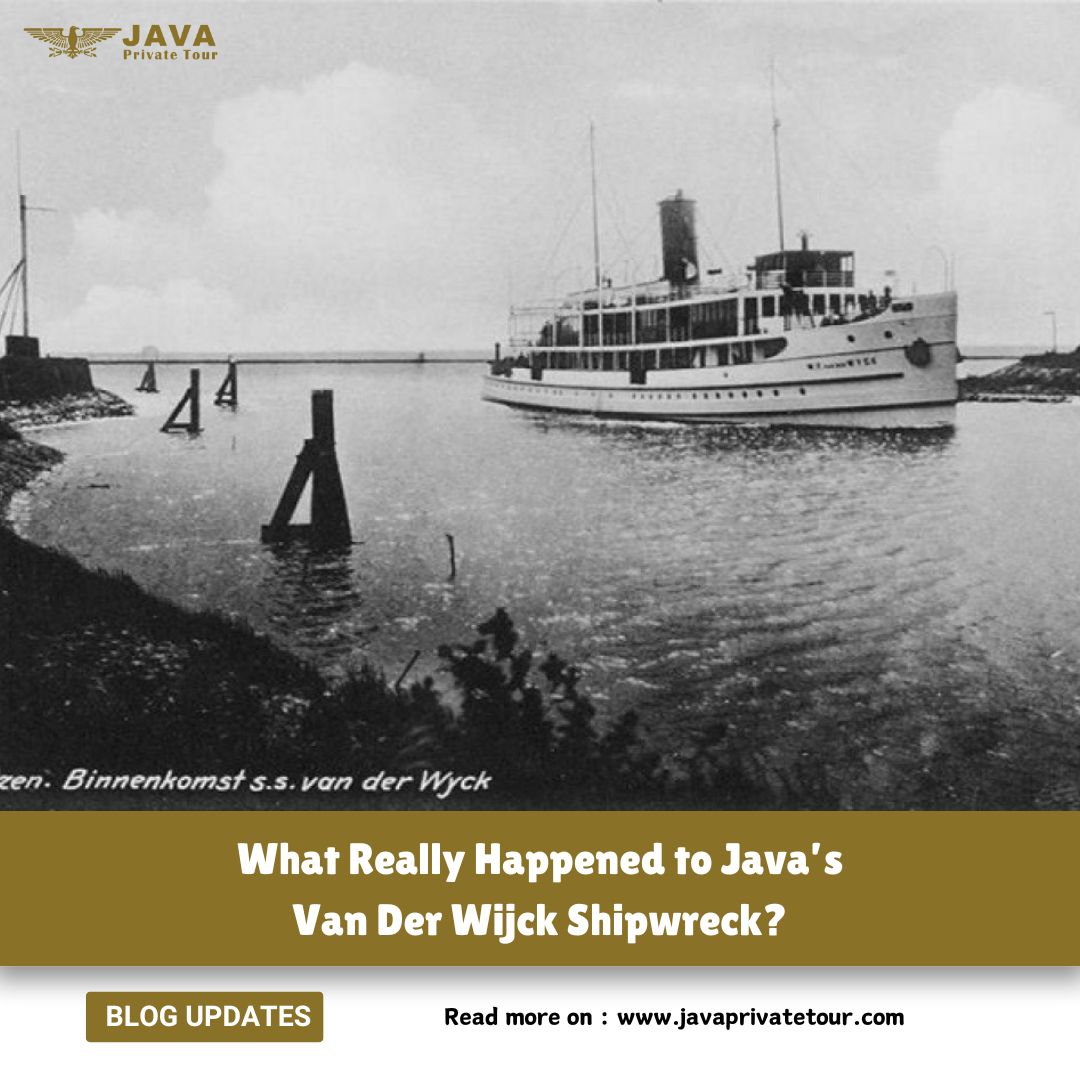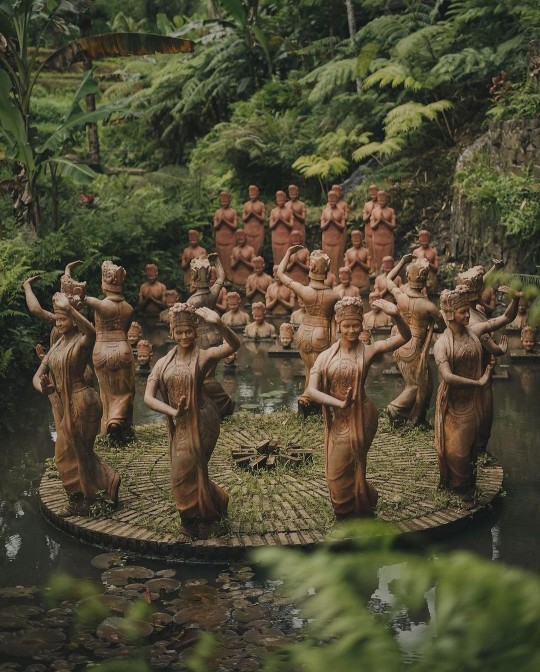Welcome to a journey through one of Java’s most intriguing historical events—the tragic sinking of the Van Der Wijck ship. This story is more than just a tale of the past; it’s a legend that has inspired literature, intrigued historians, and captured the imagination of many. Let’s explore this fascinating chapter of history together, diving deep into the mystery and the legacy it left behind in the waters of Java.
Introduction to the Van Der Wijck Shipwreck
Imagine sailing through the tranquil waters of Java, surrounded by nothing but the horizon and the endless sky. This was the setting for the Van Der Wijck ship’s final voyage—a journey that would end in one of the most mysterious shipwrecks in Indonesian history. On the night of October 19, 1936, this once-majestic steamship sent out a distress signal before disappearing beneath the waves near Lamongan, East Java. The ship itself was enormous, boasting a length of 125 meters and a width of 20 meters, making its sudden and tragic sinking even more shocking.
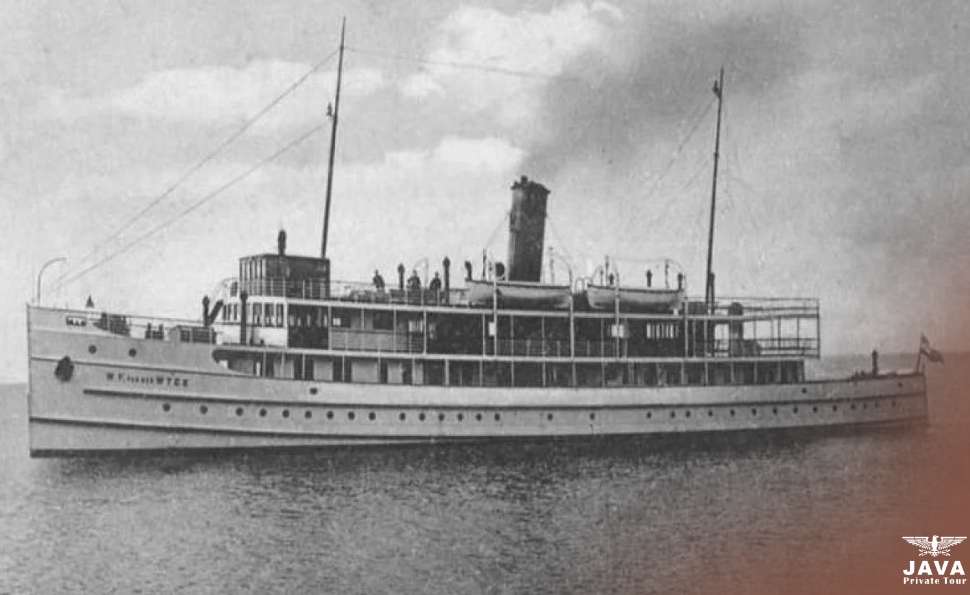
The Historical Significance of Van Der Wijck
The Van Der Wijck was more than just a ship; it was a symbol of the Dutch colonial era in Indonesia. Named after Jonkheer Carel Herman Aart van der Wijck, a former Governor-General of the Dutch East Indies, the ship was built in 1921 and served as a vital link between the islands of the Indonesian archipelago. It represented the height of engineering at the time, with its sleek design and state-of-the-art technology.
The Fateful Voyage: October 19, 1936
The journey began as any other, with the Van Der Wijck setting sail from Surabaya, heading towards Batavia (now Jakarta). However, delays due to overloading caused the ship to depart three hours late, at 9 PM. As the night progressed, the calm seas turned treacherous. Just before midnight, the ship began to tilt, and within minutes, it sank into the Java Sea, taking many of its passengers with it. Despite rescue efforts, only a fraction of the 260 passengers and crew survived. The Van Der Wijck, which was serving the Makassar-Palembang route, had the capacity to carry 1,093 people. On that fateful day, it was carrying 223 passengers and crew from Surabaya. Out of these, 153 were rescued, while the remaining 70 were lost. Historical records indicate that the ship suddenly tilted and sank rapidly within just six minutes.
To this day, the cause of the sinking remains unclear, although there is speculation that the ship was carrying ironwood destined for export to Africa. Interestingly, the ship shares its name with a fort in Kebumen, Central Java, both named after Jonkheer Carel Herman Aart van der Wijck, the Dutch Governor-General from 1893 to 1899. Wicaksono, a historian, mentions that historical documentation describes the Van Der Wijck as a beautiful ship, which perhaps explains why it’s often referred to as the “Titanic of Indonesia.” This nickname is fitting, given the ship’s tragic end that has become the backdrop for a famous romance story.
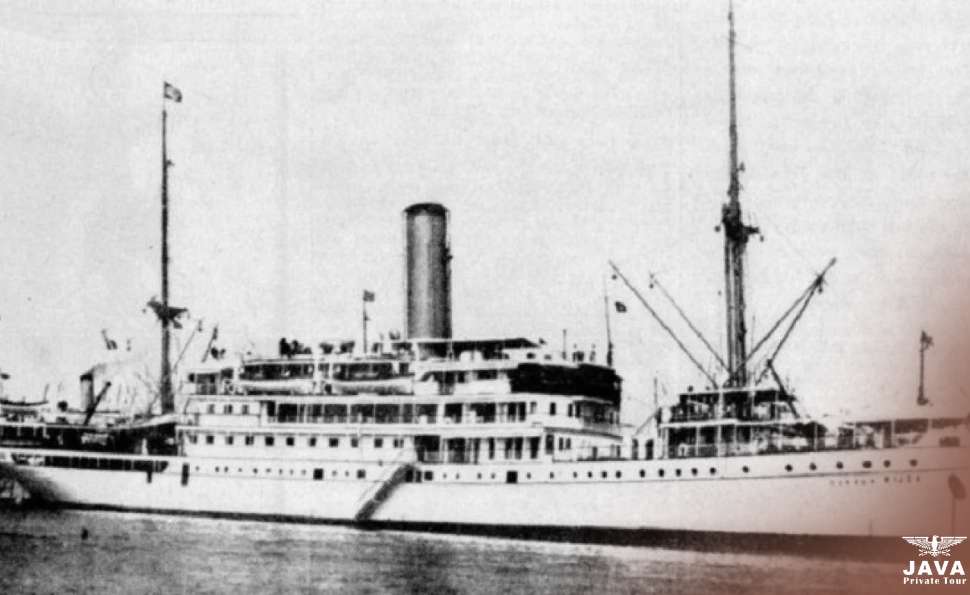
The Mystery Behind the Sinking
To this day, the exact cause of the Van Der Wijck’s sinking remains a mystery. Was it a structural flaw, human error, or something more sinister? Investigations at the time were inconclusive, with conflicting reports about whether the ship’s cargo hatches had been properly secured. Some speculated that the ship was overloaded, while others believed that a sudden shift in the cargo’s weight caused the ship to capsize. Whatever the cause, the tragedy has left a lasting mark on Indonesian maritime history.
Hamka’s “Tenggelamnya Kapal Van Der Wijck”
The sinking of the Van Der Wijck inspired one of Indonesia’s most famous novels, “Tenggelamnya Kapal Van Der Wijck,” written by Hamka in 1939. The novel tells the story of Zainuddin, a young man of mixed Minangkabau and Bugis heritage, and his tragic love for Hayati, a woman bound by strict Minangkabau customs. The shipwreck serves as a powerful metaphor for the doomed love affair, reflecting the deep emotional and social conflicts of the time.
This novel, inspired by the real-life sinking of the Van Der Wijck in 1936, was controversially accused of being plagiarized from Jean-Baptiste Alphonse Karr’s Sous les Tilleuls (1832). However, these accusations were largely seen as politically motivated, and despite the controversy, Hamka’s novel has continued to be reprinted to this day, solidifying its place in Indonesian literary history.
Exploration and Discovery of the Wreck
In recent years, there has been renewed interest in the Van Der Wijck wreck, particularly among archaeologists and divers. In 2023, a team from the East Java Heritage Preservation Agency announced the discovery of what they believe to be the remnants of the Van Der Wijck, lying 45 meters below the surface, 10 kilometers off the coast of Brondong, Lamongan. This discovery has sparked new discussions about the ship’s final moments and the stories it still holds. The wreck is located 17 miles from the Brondong Harbor in Lamongan, at a depth of 54 meters. However, due to murky water conditions and the limitations of the diving equipment, divers were only able to reach a depth of 45 meters, making it impossible to fully photograph the ship. The initial documentation of the wreck has been completed, and the findings will be used to plan the next steps, particularly to confirm whether this wreck is indeed the Van Der Wijck. This preliminary identification is also crucial in securing the site from treasure hunters. Wicaksono also noted that many other shipwrecks from World War II can be found in the waters off East Java, though many have already been looted, with the metal being sold as scrap.
In an intriguing twist, the Lamongan Regency government is considering turning the wreck site into an underwater tourism destination, should it be confirmed as the Van Der Wijck.
Why Visit Java to Learn About Van Der Wijck
Java is not just an island; it’s a living museum of Indonesia’s rich history. The story of the Van Der Wijck is just one of the many narratives that have shaped the island’s identity. Visiting Java offers a unique opportunity to connect with this history, whether through exploring historical sites, visiting museums, or even diving to see the wreck itself. The island’s diverse landscapes and vibrant cultures provide the perfect backdrop for an immersive historical experience.

Other Historical Sites to Explore in Java
While the Van Der Wijck wreck is a fascinating site, Java is home to many other historical landmarks. From the ancient temples of Borobudur and Prambanan to the colonial architecture of Old Batavia, Java offers a wealth of cultural treasures. Other notable sites include the Sultan’s Palace in Yogyakarta, the volcanic landscapes of Mount Bromo, and the traditional villages that still practice age-old customs.
Tips for First-Time Travelers to Java
For those visiting Java for the first time, it’s important to plan your trip carefully. Java is a large and diverse island, so consider what you want to see and do. If you’re interested in history, make sure to include stops at significant cultural sites. For nature lovers, Java’s national parks and volcanoes offer stunning landscapes to explore. And don’t forget to try the local cuisine—each region of Java has its own unique flavors and dishes.
Java Private Tour: Your Gateway to Java’s Secrets
When exploring Java’s rich history and natural beauty, having a knowledgeable guide can make all the difference. Java Private Tour offers a personalized experience, with professional guides who are fluent in English and deeply knowledgeable about the island’s history and culture. Whether you’re on a business trip, conducting research, or simply exploring for leisure, Java Private Tour can tailor your itinerary to your specific interests.
What sets Java Private Tour apart is its flexibility and attention to detail. You won’t be stuck with a rigid schedule; instead, you can explore at your own pace, with a guide who is there to ensure you get the most out of your visit. The team at Java Private Tour includes certified local guides and professional drivers, all of whom are committed to providing the highest level of service. Their reputation is backed by recommendations from several embassies, a testament to their reliability and expertise.
Choose the Best with Java Private Tour
When it comes to finding the perfect guide in Java, look no further than Java Private Tour. Be cautious of imitators—there’s only one true Java Private Tour. While some foreign tour companies might use similar names, we are the original and authentic Java Private Tour. You can find us at www.javaprivatetour.com, and make sure to verify our location on Google Maps here.
If this is your first time visiting Java, let Java Private Tour be your trusted companion. We’re not just a tour company; we’re your partners in uncovering the essence of Java. Whether your visit is for leisure, business, research, or content creation, we strike the perfect balance between professionalism and a personalized touch.
Ready to embark on your Java adventure? Visit https://www.javaprivatetour.com/req to start planning your journey. Or if you prefer, you can chat with us directly on WhatsApp by clicking this link: https://wa.link/wk2hur.
With Java Private Tour, you’re not just getting a guide—you’re gaining a friend who’s dedicated to making your trip nothing short of extraordinary. We look forward to welcoming you to Java!
You May Also Like
 The Stolen Gold of Java: Nakamura’s Legendary Heist
The Stolen Gold of Java: Nakamura’s Legendary Heist
 Meet the Kings of Java with the Most Wives and Concubines
Meet the Kings of Java with the Most Wives and Concubines
 Out of Sundaland: Tracing the Ancestral Footsteps in Java Island
Out of Sundaland: Tracing the Ancestral Footsteps in Java Island
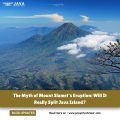 The Myth of Mount Slamet’s Eruption: Will It Really Split Java Island?
The Myth of Mount Slamet’s Eruption: Will It Really Split Java Island?
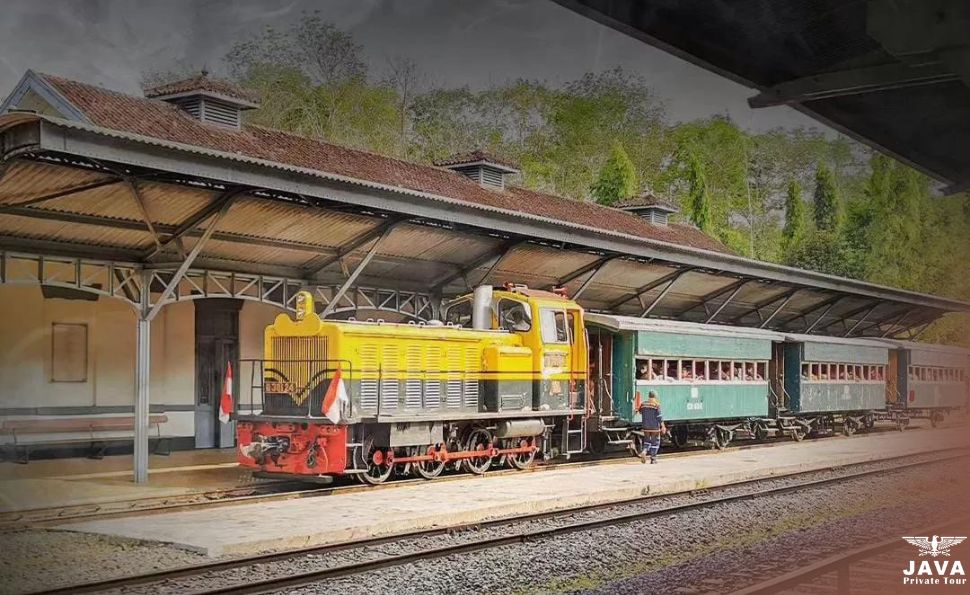 Discovering Tuntang Station: A Dutch Heritage Site in the Heart of Java
Discovering Tuntang Station: A Dutch Heritage Site in the Heart of Java

